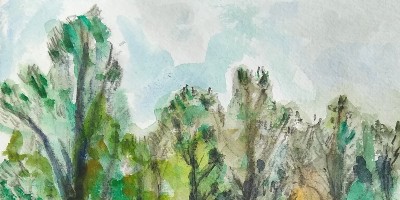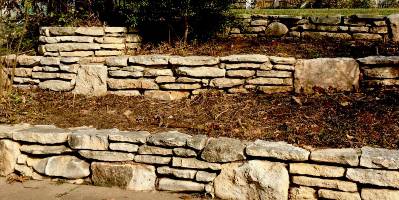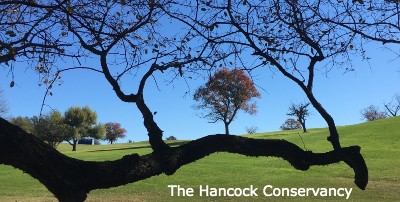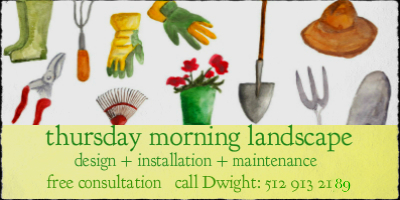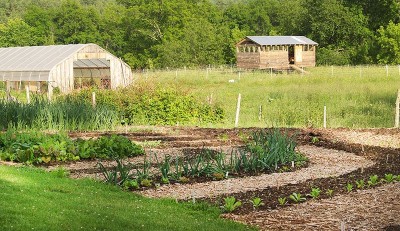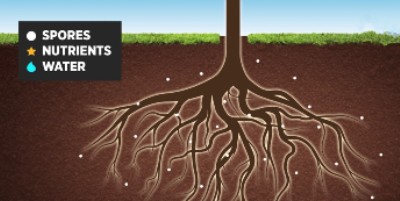An Intro to No & Low-Till Gardening
by Charlotte Jernigan
'No till' refers to the now popular practice of never disturbing the soil’s natural layers by turning, plowing or tilling.
Once a bed or row is defined and established, all future maintenance is done through compost and amendment side-dressing and mulch top dressing. (Some nutrient amendments may also be added via between-row troughs or drip-line crescents.)
No and low-till methods focus on preservation of the delicate fungi mycorrhizae hyphae webs as designed by Mother Nature.
This is sometimes called “the soil food web” which states that there is an essential symbiotic relationship between plants and soil fungi mycorrhizae.
Given that the labor required for tilling is saved, plus other benefits listed below, it is a marvel that more gardeners are not practicing no or low till methods.
Quite simply, these no till methods significantly reduce the market for legacy fertilizers, pesticides, weed killers and fungicides. There seems to be some resistance to this information at the state, county and university research level because it can be a market-killer for these legacy products.
However, the organic farming and gardening communities have spurred development of new products which support no and low till methods thus creating new markets. This painful market transition is moving forward as farmers and gardeners educate each other on the notable benefits.
________________________________________________
How it works
The fungi mycorrhizae spore germinates in the soil and penetrates the nearest roots, altering the root structure.
This allows trading to begin.
Water and soil nutrients that the plant needs are traded for the fuel sugars (carbohydrates) that the fungi need. Plentiful nutrients help plants to expand their root systems.
At the same time, the fungal hyphae network extends many times wider than the plant’s root system. Through these dual expansions, significant additional water and nutrients are available to the plant.
________________________________________________
Some No/Low Till Principles
Priority is given to the soil food web as a superior nutrient and water access network.
In garden beds not disturbed by tilling, turning or double-digging, delicate endo-mycorrhizae fungi will forage for water and nutrients much further out than the plant’s roots.
In recent research mycorrhizal networks which connect the entire forest floor have been shown to “broker” nutrients between different tree species, somewhat like free trade treaties between countries. Deficient nutrients will be requested and delivered between tree species many meters apart using the networks as the go-between.
In no/low till, soil loft is NOT sought through tilling or turning but rather is maintained by a combination of the following:
1. The living root networks themselves and their associated fungi mycorrhizae.
2. Some judicious use of the weed-hoe and garden fork during replanting (thus “low till”)
3. Abundant organic compost, applied as a seasonal side dressing.
4. Proper mulching, applied as a seasonal top dressing (chopped/spent crops, pine needles, leaves, coconut coir, etc.)
5. The “legacy” root systems that are left in place when spent plant stems are cut at the soil surface leaving their root systems to decay in place; legacy root systems may have enough carbohydrates (sugars) to sustain the fungi between crops.
6. Keeping the worm populations healthy with their nests, networks and castings
Strong direct fertilizers, which can burn or run-off, are no longer needed. Heavily tilled soil, in which mycorrhizae fungi networks are periodically destroyed, requires direct nutrient supplements while no/low till crops rely in the naturally regulated provisions of the undisturbed soil food web.
________________________________________________
No/Low Till Benefits
-
Additional nutrients and water allow the plant root systems to grow larger.
- These more robust root networks will also be greatly “extended” by the symbiotic reach of the fungal mycorrhizal hyphae network that is assisting the plant.
- No-till endo-mycorrhizae hyphae networks create more drought-tolerant plants.
- The stable soil ecosystem may lead to some natural predator control (e.g. harmful nematodes.) These results are observed by gardeners but are still being studied.
- The stable soil ecosystem may lead to some natural weed control. These results are observed by gardeners and seem to be related to reduced weed seed scatter that happens with tilling.
- The soil “microbiome” (bacterial, fungus & yeast content) is naturally enhanced in its role of “digesting” soil and mulch components to release nutrients. This can be compared to the role that a healthy human microbiome plays in our GI tract.
- Decreased risk of fertilizer burn which can happen with conventional fertilizers.
- Environmental stewardship through reduced use of strong direct fertilizers and other harmful garden chemicals. For example, ground water contamination or fertilizer run-off when excess nitrates wash through the soil causing invasive aquatic-plant and algae bloom problems in creeks, streams or lakes.
________________________________________________
Methods and Tools
- Once beds or rows are formed, they are maintained “as is” across planting seasons.
- The top 5-7 inches should never be mixed with the soil below it due to the difference in the biological state of the soil layers. Gentle aeration with a garden fork is OK.
- The previous season’s crop or annuals are clipped off at the soil surface. Their legacy root systems are left in place. Some no/low till gardeners also surface cut weeds with a hoe or clippers.
- Surface cut plant matter can be chopped and composted or used as top mulch.
- Complimentary soil nutrients are beyond the scope of this article but application methods for organic compost and nutrients include side-dressing, line troughs between plants and drip-line crescents. Appropriate top mulching is also essential.
-
Useful tools for small scale no/low till: pruners, hand-trowel, hoe for weed top scrapping and possibly a garden fork used judiciously for light aeration and loosening. Over time heavy soils seem to become lighter and soil loft is more self-sustaining.❦
Charlotte Jernigan is a native Texan who has been an integral part of Austin's Sunshine Community Garden for the last 21-years. Her volunteer focus at Sunshine was on member education for organic food gardening. She recently moved to the far eastern tip of Tennessee to fulfill her long-time intention of living in a land with four seasons.



